Another fantastic and comprehensive iOS review by Rene, as usual. Between this one and the aforelinked review by Federico Viticci, your iOS 9 reading needs should be pretty damn well covered.
watchOS 2 delayed, won’t be released today →
It looks like Apple Watch wearers will have to wait a little longer for the first major update to watchOS. Matthew Panzarino, writing for TechCrunch:
Apple has delayed the release of watchOS 2, which was expected to be available today to owners of the Apple Watch.
“We have discovered a bug in development of watchOS 2 that is taking a bit longer to fix than we expected,” an Apple spokesperson told TechCrunch. “We will not release watchOS 2 today but will shortly.”
Via Daring Fireball.
Federico Viticci reviews iOS 9 →
At 48,000 words, this is a massive undertaking by Federico. His much-anticipated review went straight to the top of my Instapaper queue, as it should do yours. Or better yet, just go read it right now.
The O: wearable + app to never lose or forget anything →
Interesting and clever Kickstarter project. The O is a small wearable device you can attach to your essential items — like your smartphone, keys and wallet, for example. It will alert you whenever you leave an item behind via its companion smartphone app.
The project has less than 2,000 £ and 22 days to go to get funded, so it’s very likely to succeed. Check it out.
Sony announces uncompressed 14-bit RAW files and 8 new FE lenses for the A7-series cameras →
Great announcement today from Sony on their Alpha Universe website:
Sony Electronics, a worldwide leader in digital imaging and the world’s largest image sensor manufacturer, has today announced user selectable Compressed and Uncompressed 14-Bit RAW image capture will be featured in the new α7S II once it arrives in stores this October.
Additionally, they have announced plans to add user selectable compressed or uncompressed 14-Bit RAW still image capture via firmware update to additional cameras beginning with the recently introduced α7R II full-frame mirrorless model.
And also (emphasis mine):
The α7S II and α7R II are compatible with Sony’s growing lineup of α -mount lenses, which now totals 64 different models including 13 native ‘FE’ full frame lenses. By early 2016, Sony will add an additional 8 new lenses to its FE full frame lineup, bringing the FE total to 21 lenses and the overall α -mount assortment to over 70 different models.
This announcement not only addresses, but downright eliminates the two greatest perceived flaws of the A7-series system. Sony is absolutely killing it lately.
Andrew Kim reviews the Leica Q →
Like I said in the last issue of Morning Coffee, I’m not a big fan of the Leica Q, which is why I didn’t immediately rush to read this review when Josh Ginter linked to it last week. Having read through it now, I can say I have a much better understanding of why so many people seem to love this camera. Andrew’s review is visually gorgeous, and makes lots of good points on the strengths and weaknesses of the Leica Q.
My biggest criticism of the camera comes down to its relatively limited usability for the price, especially when compared with non-Leica interchangeable-lens cameras. The Leica Q is available for preorder on B&H for $4,250, which is a crazy sum to pay for a fixed-lens camera, even if it has a Leica logo on it.
Then again, Leica cameras have long been several times more expensive than the competition, and that hasn’t stopped people from buying them, so what do I know. And it’s worth keeping in mind that even though $4,250 is certainly a lot of money, it’s still less than half the price of the current Leica M camera plus a 28mm f/2 Summicron lens. As surreal as it sounds, if you’re a Leica photographer who shoots mostly with a 28mm lens, the Leica Q offers an opportunity to save some serious cash.
Not that most Leica shooters worry terribly about that sort of thing, but still.
What a crazy week. As if an Apple keynote wasn’t enough of a post-vacation jolt, we also got other announcements in the photographic department, as well as plenty of interesting news for those not so tech-inclined.
Let’s get to it.
Issue #14: Apple, Apple, Apple, and a bit of something else
The undisputed star of the week was of course the Apple event, with plenty of new product announcements. If you’re interested, I shared my own thoughts on the matter a couple days ago, and throughout this issue I will be sharing several other takes on it that I thought were particularly insightful, or entertaining to read. Enjoy.
Notebook: Apple’s newest product announcements | Jason Snell →
Jason’s take is usually among the first I look for after an Apple event. Part of why is, of course, the fact that he’s actually been there in person, so he always has plenty of interesting comments from his hands-on experience with the new products. But the biggest reason is simply that over time, I’ve noticed that Jason’s opinion is usually pretty close to my own take on things, so I’ve grown to implicitly trust his judgement more than perhaps any other writer’s. Here’s what he had to say about the new iPad Pro’s Smart Keyboard:
The Smart Keyboard seems great for what it is, which is a keyboard so small and thin that you can carry it with you everywhere and use it as a screen protector. The keys move, a little, and it’s a comfort to feel real key caps. Whether or not I’d buy one would depend on whether I found myself wishing for a physical keyboard all the time, or whether it was a rare enough need that I’d be better off using the software keyboard and bringing out a Bluetooth keyboard when things got serious.
It’s a good thing that he sort-of-likes typing on it, but just as I thought, actually buying one is far from an obvious choice. Check out Jason’s more in-depth thoughts on the Smart Keyboard in his hands-on piece for Macworld.
♤
Brief thoughts and observations regarding today’s ‘Hey Siri’ Apple event | John Gruber →
Gruber’s take is another obligatory one. Besides his thoughts on the products themselves, he also goes a little bit into the organization of the event, and Apple’s possible motives to forego their usual 2-events strategy of years past in favor of this year’s single-event approach:
My guess is that one event, in early September, is going to be the new normal. I gather that Apple has decided that putting all of its wood behind one fall event arrow, even if it means that they have to cut worthy products from getting any stage time, is better than spreading themselves too thin with two events in short succession.
This does seem like a plausible explanation, but we’ll have to wait and see what happens next year.
♧
From products to platforms | Ben Thompson →
Ben Thompson also penned a great piece on the Apple event over at his always-excellent Stratechery website. His point, and I take it, is that while Apple is great at building awesome products, their track record is a lot more spotty when it comes to building successful and sustainable platforms that 3rd party developers can rely on to make a living:
My contention, though, is that when it comes to the iPad Apple’s product development hammer is not enough. Cook described the iPad as “A simple multi-touch piece of glass that instantly transforms into virtually anything that you want it to be”; the transformation of glass is what happens when you open an app. One moment your iPad is a music studio, the next a canvas, the next a spreadsheet, the next a game. The vast majority of these apps, though, are made by 3rd-party developers, which means, by extension, 3rd-party developers are even more important to the success of the iPad than Apple is: Apple provides the glass, developers provide the experience.
That, then, means that Cook’s conclusion that Apple could best improve the iPad by making a new product isn’t quite right: Apple could best improve the iPad by making it a better platform for developers. Specifically, being a great platform for developers is about more than having a well-developed SDK, or an App Store: what is most important is ensuring that said developers have access to sustainable business models that justify building the sort of complicated apps that transform the iPad’s glass into something indispensable.
The future of the company is tied to its ability to create a cohesive ecosystem that users keep wanting to use, and developers keep wanting to build apps for. Apple has long excelled in the former, but their real test lies in the latter.
♡
Initial thoughts on iPad Pro | Fraser Speirs →
Fraser Speirs also shared some very interesting thoughts on the iPad Pro this week. I particularly liked a section he aptly titled “The Microsoft Angle”:
In the intervening time, I’ve often said that I basically want “a Microsoft Surface just not made by Microsoft or running any Microsoft software”.
What I wanted was Apple to adopt something like the Surface strategy. In saying that, I don’t mean I want Apple to take Mac OS X and jam it into a tablet. What I want is for Apple to make an iPad that can be my only computer.
A few commentators have been complaining that the iPad Pro with its fabric-covered keyboard case is just the Apple Surface. If so, great! Kind of amusing, though, that the best Office-for-touch experience will probably be Office for iOS running on an iPad.
♢
Apple: You’ve seen it all before, and nothing else like it | Joshua Topolsky →
Of course, not all Apple-related pieces published this week were going to be great, even if they appear on a publication as prestigious as The New Yorker. This piece by Joshua Topolsky strikes me as little more than a rehash of the same Apple-related tropes we’ve heard time and time again over the years. You’ve read it all before. According to Topolsky, Apple doesn’t really invent anything, they “just” execute better than anybody else:
Mind you, this is not a new skill that Apple has acquired. In fact, some of the company’s biggest hits were simply a rethink or tweak of an old idea or two. The iPod wasn’t the first MP3 player, and Apple certainly didn’t create the first smartphone. The company also didn’t invent the first tablet, and when it introduced its new one this week, the main selling point was that Apple had enlarged an object that it had recently shrunk.
“Simply a rethink or tweak of an old idea or two”. At some point — long before a company grows to become the most valuable company in the world — such over-simplifications are just lazy.
♤
Fixing Twitter | Dustin Curtis →
OK, time to move on to other non-Apple stuff. In this thought-provoking piece, Dustin Curtis offers some advice on how Twitter could dramatically improve their service:
Second–and this one is obvious to almost everyone–Twitter needs to focus on realtime events. When I open Twitter during a major debate in the US, or when a bomb has exploded in Bangkok, there should be a huge fucking banner at the top that says “follow this breaking event.” It shouldn’t just search for a hashtag–it should use intelligent algorithms to show me all of the relevant content about that event. It should be the place you go to learn about what is happening in the world right now. When something major happens in the world/your country/your city, you should be trained to immediately and automatically think, “open Twitter to get updates.” This is so obvious to me that I wonder what Twitter’s product team has been doing—are they over-designing a solution to this? It’s so simple. 90% of the UI and 80% of the search functionality is already in the app.
♧
Stephen Colbert, the Late Night Hope | Dave Itzkoff →
This was a great profile on Stephen Colbert over at The New York Times. Via Chris Gonzales’ unmissable ‘Quality Linkage’ Friday column over at Tools & Toys.
♡
Siracusa on toasters | Casey Liss →
Just like it says on the tin. Wonderful.
♢
Miyamoto on World 1-1: How Nintendo made Mario’s most iconic level | Eurogamer →
This amazing video walkthrough with Mario’s creator Shigeru Miyamoto gives you the inside scoop on how one of the most iconic video-games ever was designed. Priceless.
♤
Outstanding service | Joe Posnanski →
Great piece by Posnanski for NBC Sports. He makes the case that Roger Federer’s serve is the best tennis has ever seen. I know it sounds silly, but before you jump to any conclusions, read through the entire piece. Here’s a relevant excerpt:
Federer serves the way Greg Maddux used to pitch, mixing speeds and spins, bouncing one high, skidding one low, never hinting at what is coming next. No one has ever coaxed an opponent to lean the wrong way more often than Federer. I actually have a theory about this; I think there is something magical about Federer’s toss. He leans forward, bounces the ball two or three times, looks up and tosses the ball. And – maybe this is just my imagination – the ball seems to hang in the air for an instant longer than anyone else’s toss. His toss defies gravity. It just seems to dangle there, as if waiting for the returner to make the first move. Then, and only then, Federer unleashes.
But maybe you would prefer hard numbers: Federer has won 57 percent of his SECOND serves in his career, the highest percentage of anyone in the last quarter century. His second serve is as much of a wonder as his first; he makes it dance.
And, as mentioned, Federer only seems to be getting better. This year his record in his service games is 588-44 – he’s won an astonishing 93 percent of the time, the highest percentage of his career and the highest in the world.
This, to me, is the thing that puts him just a tick ahead of Sampras – his serve continues to dominate the world. By this age, Sampras was two-years retired.
In other news, Federer and Djokovic will meet once again tomorrow in the US Open final. It will be the 42nd career meeting between them, and the second time they meet in a Grand Slam final this season, after Djokovic won the Wimbledon final back in July. If Federer wins this one, it will be his 18th Grand Slam title.
♧
Paul Stamatiou’s camera gear | Paul Stamatiou →
Paul’s blog is one of my favorite sites, and the photo-stories of his travels are always breathtaking. He’s had a gear page for a while now, where he describes his entire setup for taking, processing and storing pictures. This week Paul updated the page to include his new Sony A7R II, as well as a new design and lots of incredibly nerdy details. I love it.
♡
Leica Q review: thoughts and sample images | Alex Cornell →
Just like Paul, Alex Cornell also has a knack for taking awesome pictures during his frequent world-wandering escapades. This time around, he took the new Leica Q with him to Mallorca and Barcelona. I’m not a big fan of the Leica Q, but even I have to admit than in Alex’s hands, the camera is capable of producing some really amazing imagery.
♢
Zeiss Loxia 50/2 review | Viktor Pavlovic →
Continuing with my dangerous research on the Zeiss Loxia lenses for the Sony A7-series cameras, this incredible review of the Loxia 50mm f/2 Planar by Viktor Pavlovic has everything one could possibly want, including tons of pictures and a super useful comparison with both the Sony FE 55mm f/1.8 Sonnar that I own, and the legendary Zeiss 50mm f/2 Planar for the Leica M-system. Absolutely top-notch stuff.
♤
Summer - Disney World | Erin Brooks →
The Brooks family spent a few days in Disney World, and Erin did an amazing job of capturing those magical moments. Lots of beautiful pictures of a beautiful family, and a perfect way to bring this issue to a close.
♧
Afterword
As you’ve seen, Apple-related pieces have all but dominated the week in terms of headlines, but also in terms of in-depth thought and analysis pieces. I greatly enjoy reading these types of articles, and it’s always a fun game to see how different people interpret the same announcements so very differently.
As for the rest of stuff that’s been going on, it’s also been a pretty interesting week. I particularly enjoyed getting back to writing more, after spending the majority of my time over the past few weeks taking care of seemingly urgent matters that had kept me away from the keyboard. It feels great to get back into a productive rhythm, and I hope I can keep it up for a few more weeks, at the very least.
♤
Photography-wise, my thoughts keep coming back to the Zeiss Loxia lenses for some reason. I just don’t understand them, and that makes me very curious to try one and see for myself what all the fuss is about. So far I have no plans to buy one, but the more I read about them, the more fascinated I become with their value proposition — or lack thereof.
I get the romantic notion of using and even preferring manual-focus lenses. After all, people have been happily using manual lenses for decades on all kinds of cameras, so there’s definitely a market for them. Heck, there’s even a market for $10,000 manual lenses, as the Leica Noctilux proves. And the Otus lenses by Zeiss are no slouches, either.
However, all those outrageously expensive pieces of glass seem to bring something else to the table. In the case of the Noctilux, it’s its unsurpassed f/0.95 speed, whereas the Otus lenses bring a level of sharpness and optical perfection that nothing else can touch, especially wide open. To some, those factors justify the extra cost, especially if you’re a working photographer whose livelihood depends on owning and using the best possible gear. I get all that.
The Loxias, on the other hand, don’t seem to offer any of those extra qualities to justify their hefty price tag. Sure, at $1,300 for the 35mm, we’re talking about another category entirely, but that’s still quite a bit of money for a lens that, at f/2, isn’t particularly fast, blisteringly sharp or impressively well-corrected. It is, simply, a very good all-around lens, but it doesn’t set the standard on any of those metrics. I don’t know that that’s enough of a value proposition to warrant such a commanding price.
And yet, I keep reading reviews of people who just love them to death. I suppose, if your reference is the price of Leica M glass, or even Zeiss’ own DSLR lenses — which are also manual-focus only — then the Loxias are actually quite competitive in price. If, as some people suggest, the Loxia 50mm’s performance is roughly on par with the Leica 50mm f/2 APO Summicron, a lens that is roughly ten times more expensive, then the numbers begin to tell a very different story.
At the end of the day, I suppose it all comes down to how comfortable you are shooting with a manual lens. If you have a strong preference for them and are used to paying those kinds of prices for your glass, then the Loxias will probably look like a bargain to you. But if you’re not particularly crazy about manual focus or don’t want to give up the extra piece of mind that having autofocus provides, you’ll probably remain largely uninterested.
Me? Right now, I’m torn, which is usually not a good sign for my wallet. We’ll see.
♧
Speaking of lenses, I’ve been using the Sony FE 55mm f/1.8 lens more and more over these past few days and so far, my initial impressions seem to be holding up pretty well. I really, really enjoy shooting with this piece of glass.
I’ve used it, together with my 24-70mm zoom, to create my second photo essay which, if the schedule holds, should be published this week. It’s about one of my favorite places in Madrid: a food market that’s recently been renovated and now doubles as a popular hangout place. Look for it on Tools & Toys this upcoming Thursday. For now, I’ll leave you with a couple images as a teaser.
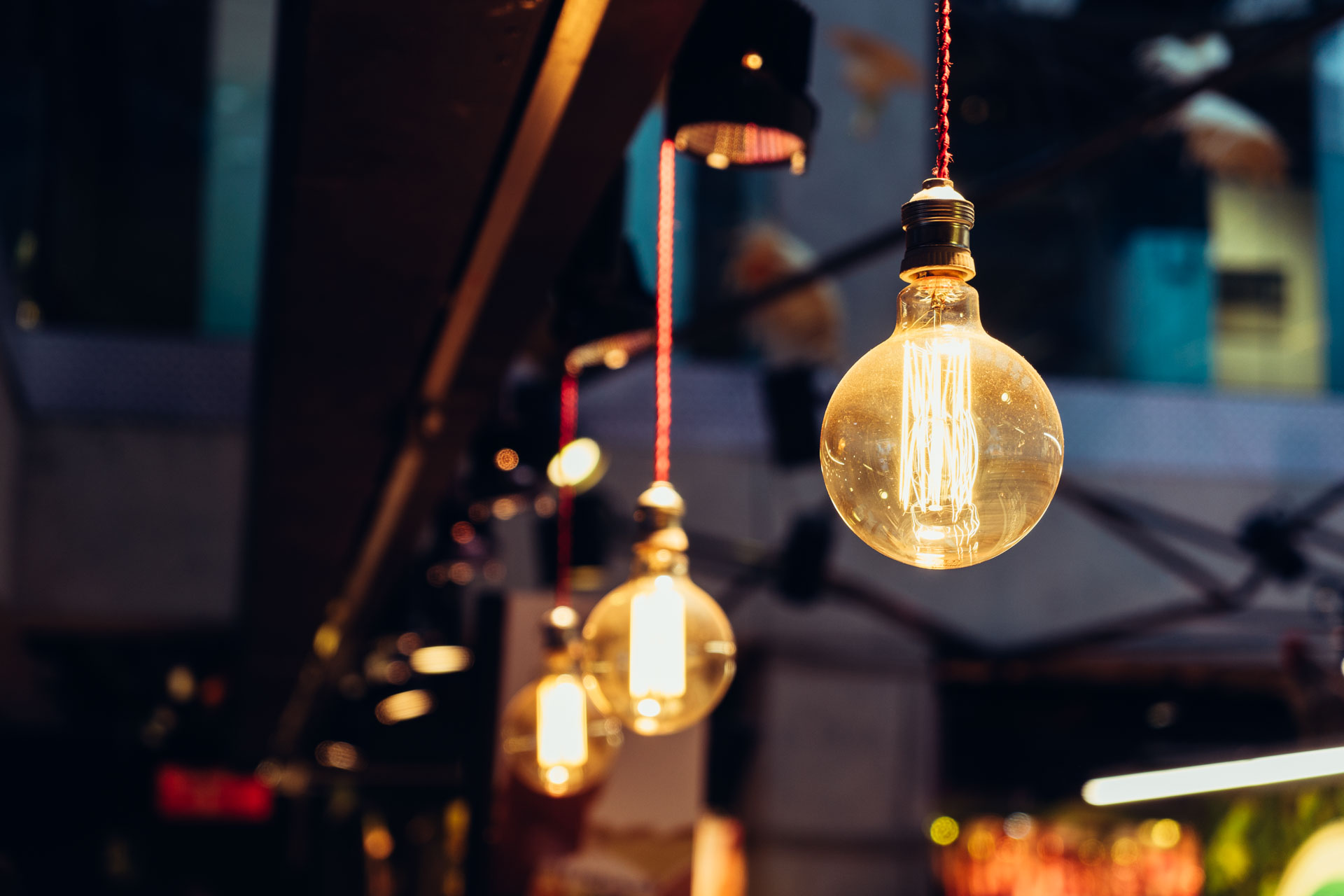


And on that note, we’ve reached the end of another Morning Coffee issue. Thanks for reading and, of course, have a wonderful weekend.
Sony announces new A7S Mark II camera →
Another day, and the week continues to be packed with announcements. Zeiss announced some interesting new DSLR prime lenses yesterday, and this morning Sony announced the new A7S Mark II camera, which looks like another winner for the A7-series.

The new Sony A7S Mark II Full Frame camera. Photos: Sony Europe.
The A7S II inherits the same body as the A7 II and A7R II before it, along with the same 5-axis in-body image stabilization technology. Better yet, this new low-light monster can reach ISO sensitivities of up to 409600, and promises minimal noise across the whole ISO range. Lastly, the camera also has a much-improved electronic viewfinder with 0.78x magnification, and can now record 4K video internally.
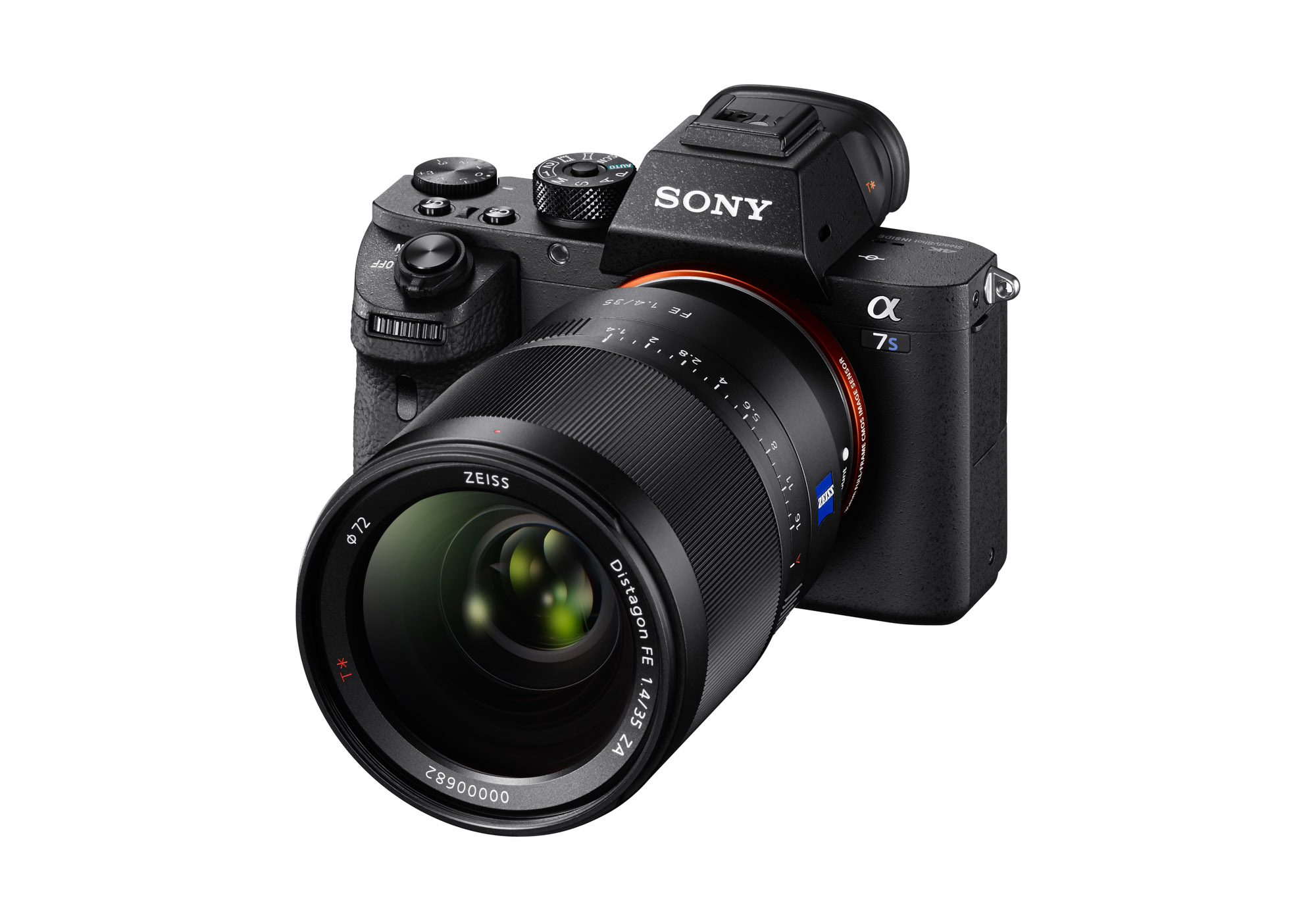
All in all, this is a really great update, although perhaps not quite as revolutionary as the A7R II was (the sensor in the A7S II is not back-illuminated, for one). Now that the Mark II phase of the A7-series is complete, each model is clearly aimed at a very different type of customer:
The 24-Megapixel A7 Mark II is a general purpose camera, perfect for those without very specific needs and those who are transitioning into a Full Frame system, professionals and enthusiasts alike.
The 42-Megapixel A7R Mark II is for those that need the extra resolution for printing large, or for very demanding applications such as fashion shooting, landscape and architecture photography, and the like. This is a camera optimized for taking still pictures, but it can also do 4K video internally.
The new 12-Megapixel A7S Mark II is the best out of the bunch for video, but it’s also perfect for low-light photography or for those who don’t need as many pixels. This is a great camera if you shoot mostly for the Web, and as a nice bonus, the smaller files its 12.2-Megapixel sensor produces will make post-processing considerably faster and less resource-consuming.
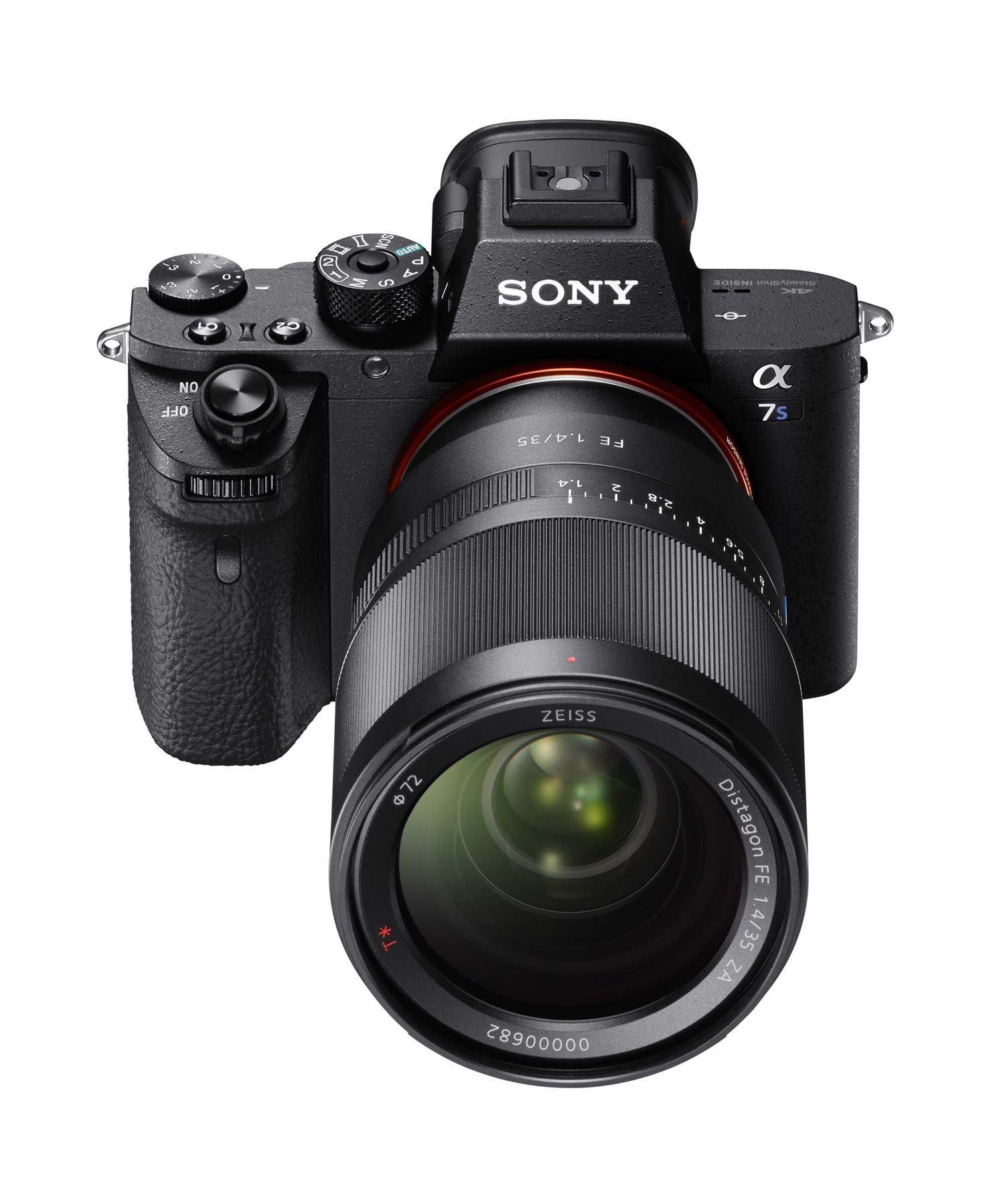
With the A7S II, Sony keeps improving upon the A7-series lineup and giving photographers even more reasons to ditch their DSLRs and jump onto the mirrorless train for good. And if the rumors pointing to new FE lens releases in October are true, things are about to get even better.
Not-so-brief thoughts on Apple’s ‘Hey, Siri’ event
Yesterday’s Apple event was the most densely packed Apple keynote in recent memory. In a little over two hours, Apple somehow managed to introduce new Apple Watch models, the new iPad Pro — including the Smart Keyboard and Apple Pencil accessories — and a long-awaited new Apple TV. Oh, and they also updated the iPhone. Not bad.
Let’s go over each of the announcements in a bit more detail.
New Apple Watch models
In a rare but interesting move, Apple unveiled new Apple Watch models only a few months after the device was originally released. This could be a great way for Apple to rekindle interest in the Apple Watch for the upcoming holiday season, where the device is poised for a very successful campaign.
Unsurprisingly, most of the new models belong to the Sport collection, which are probably the most “giftable” of all Apple Watch models due to their lower entry price. Also unsurprisingly, they all feature shiny and bright colors, making them all the more desirable.
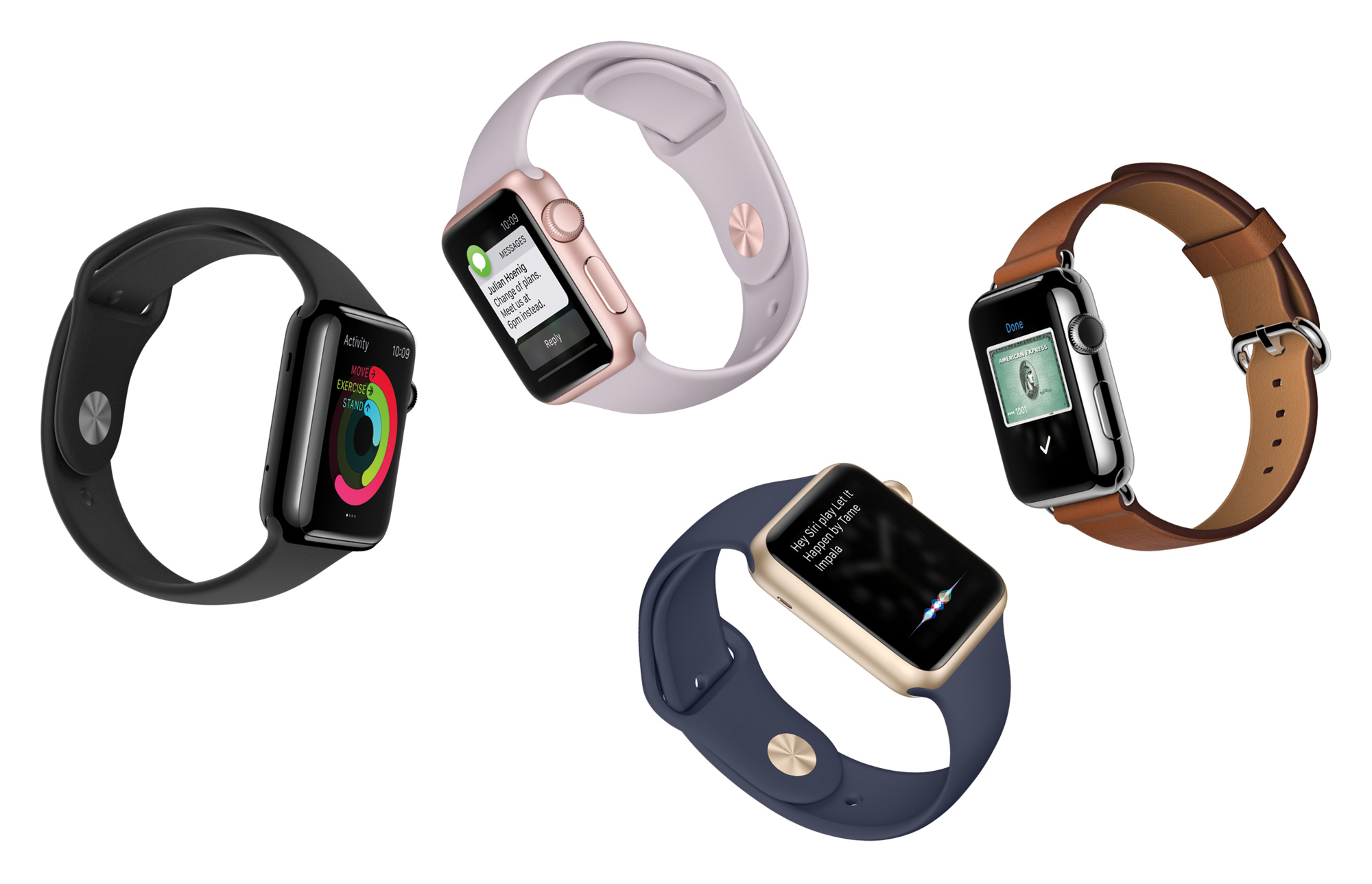
Some of the new Apple Watch models that were introduced yesterday.
As someone who wasn’t overly enthusiastic about the original Sport models, I think these new ones going to be a massive hit. I particularly like the new silver Sport watch with the orange band, but the (PRODUCT) RED Steel watch is also gorgeous.
Apple also announced a new partnership with Hermès to create specifically tailored Apple Watch models. All of the ones that were shown on stage featured leather bands, which looked just beautiful. However, they will only be available for purchase in select retail stores and, if Hermès’s history is anything to go by, they’ll be out of the price range of pretty much anyone except Pharrell Williams.
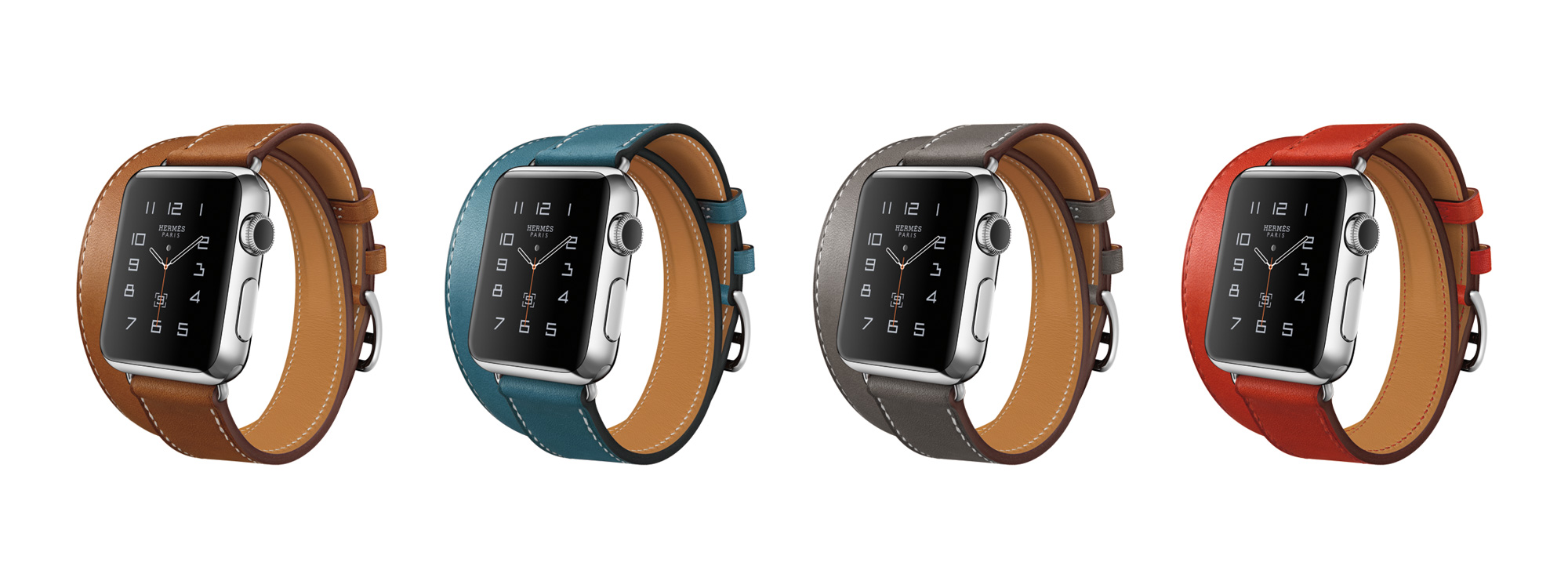
The new Apple Watch Hermès collection.
Finally, watchOS 2 will be released in September 16, just a few days from now. It’s going to be very interesting to see what 3rd-party developers do with it, and it may signal the “real” arrival of the Apple Watch in terms of usefulness and popularity. We’ll see.
The new iPad Pro
To the surprise of many, Apple also revamped their iPad lineup — well, sort of — during yesterday’s event. iPads had traditionally been renewed during their own event in mid-October, but this year Apple decided to fit every new product announcement into the same event. Judging from what Gruber and others are saying, we shouldn’t expect any more Apple events in 2015, so the rumored new iMacs will probably be released more discreetly.
Scheduling issues aside, the star of the iPad segment was undeniably the new iPad Pro. With a 12.9-inch display and a new A9X chip promising desktop-class performance while maintaining the same 10-hour battery life, this iPad is pretty darn close to what many people had been asking Apple to create for years.

With the introduction of the new iPad Pro, the iPad lineup now features three different screen sizes.
The new iPad is unashamedly optimized for content creation rather than consumption, perhaps in an intentional act to get rid of the old trope once and for all. But what’s more surprising is how they’ve taken quite a few pages from Microsoft’s Surface Pro. Indeed, it’s pretty hard to look at the new Smart Keyboard or the new Apple Pencil without thinking of the Surface’s own keyboard cover and stylus.
And here’s where things start getting ugly for me. I fully understand the need for such accessories to exist, but they still seem like half-cooked solutions to me for some reason, particularly the Smart Keyboard. I just don’t see how that big and bulky cover is better than, say, carrying an Apple Bluetooth keyboard with you. It’s not like the iPad Pro is super small to begin with, so the added bulk of a dedicated keyboard seems like a minor issue to me. Of course, both accessories are entirely optional so, as usual, it will be up to customers to vote with their wallets.
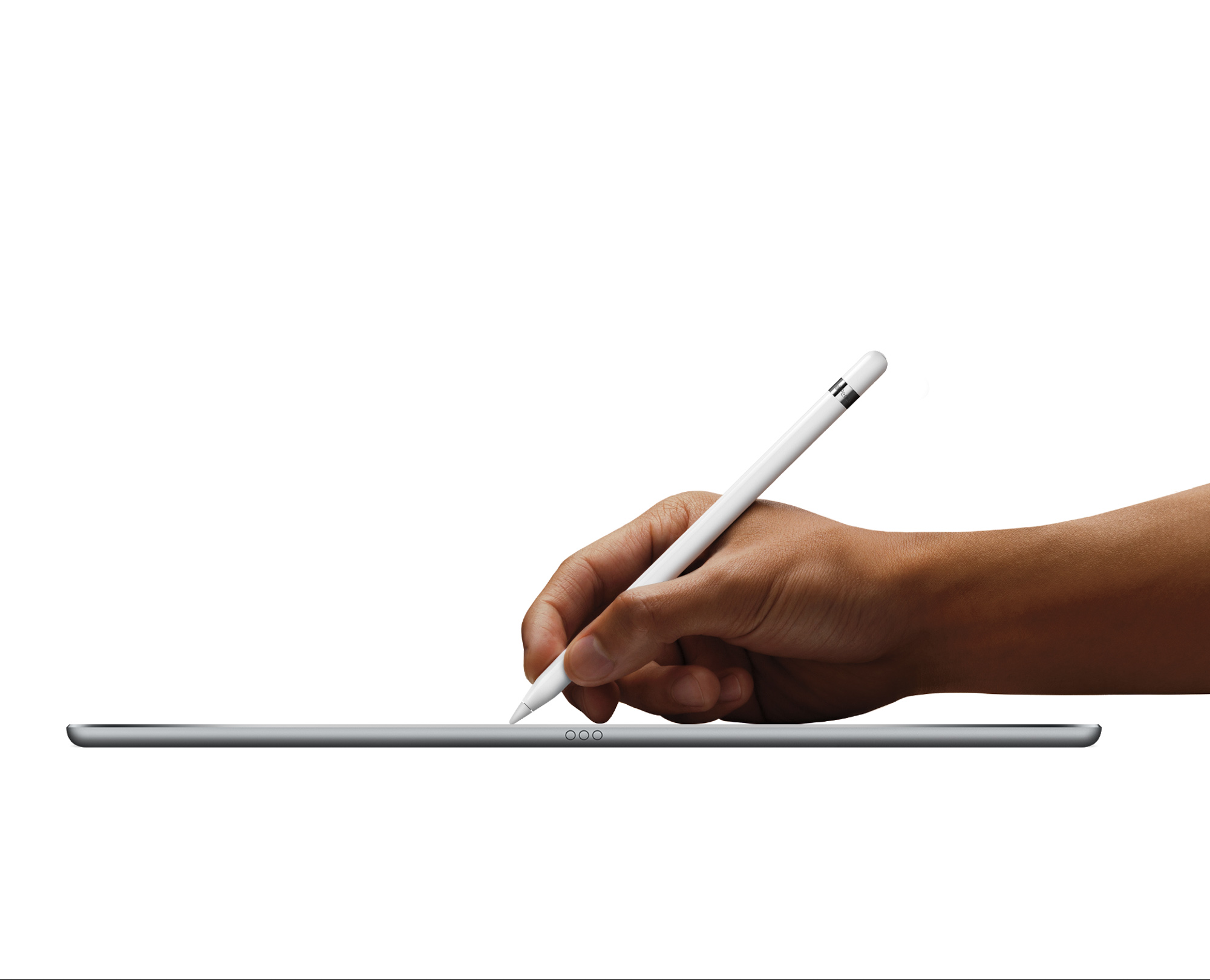
The new iPad Pro and the new Apple Pencil.
In my case, I have no interest whatsoever in the new iPad Pro, other than as a testing device for iOS development. Despite its many interesting innovations and its obvious wow-factor, it’s just not a device that fits into my daily workflow. It’s too big to fit in my everyday bag, and there’s no way I’m going to be carrying the Smart Keyboard and the Apple Pencil everywhere with me.
The way I see it, the iPad Pro is an entirely polarizing device that will force you to choose between it and your MacBook. I just can’t see the point of owning both when there’s so much overlap between the two in terms of size, weight and utility. So far, I remain firmly in the laptop camp, and the iPad Pro is not enough to get me to switch.
That said, I’m sure many people will prefer the iPad Pro over their MacBook hands-down and, for them, November probably can’t come soon enough. There’s no doubt in my mind these people will enjoy the iPad Pro more than any other device they’ve ever used.
In what seems like a well-deserved finally, those eagerly awaiting for the iPad to grow up and become a serious work tool can rejoice: Apple yesterday granted them most of their wishes, and it looks like they’re only getting started.
The other iPads
Other than the new iPad Pro, the rest of the iPad lineup didn’t see many significant changes. In fact, the only model that was updated was the iPad mini 3, which is now ingeniously called iPad mini 4.
The new iPad mini 4 inherits Apple’s A8 chip, bringing it up to speed with the iPad Air 2 in terms of performance. Simply put, this is the update many were expecting to see in 2014, it only happens to arrive a year late.
As for the 10-inch iPad, it didn’t get any love from Apple this time around. The iPad Air 2 remains unchanged in the lineup, as does the original iPad Air below it. This was definitely one of the most surprising things about the event, and it may be interpreted as a sign that Apple’s finally coming to terms with the iPad’s longer update cycle.
In all fairness though, the A8 chip was so over-specced that nobody’s going to be missing any extra performance when the iOS 9 update comes along. In fact, my A7-based iPad Air remains just as snappy as the day I bought it, so I see no reason whatsoever to get worked up about this.
On that note, Apple also announced the release date for iOS 9: September 16.
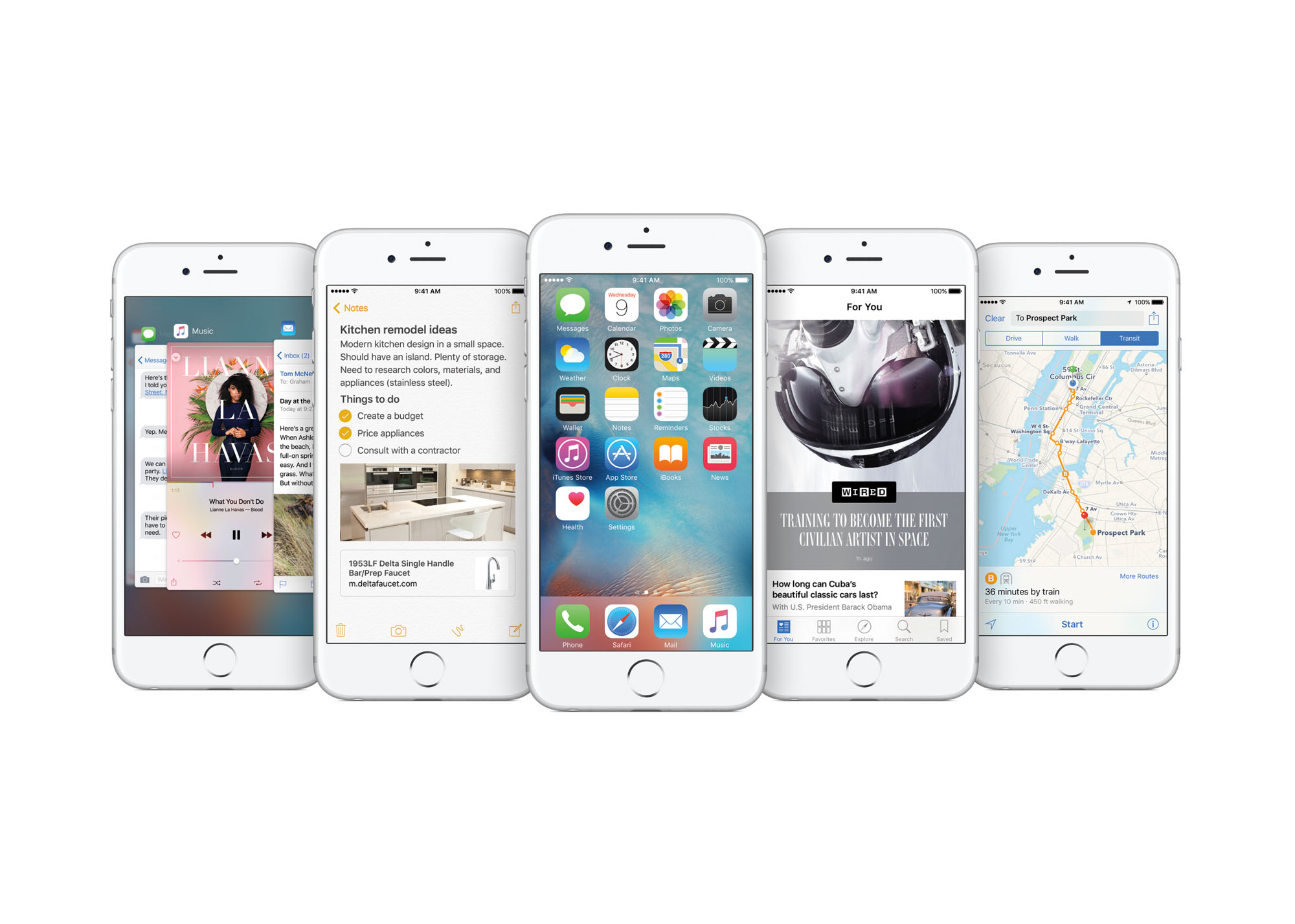
iOS 9 will be released worldwide on September 16.
The new Apple TV
Perhaps the most eagerly anticipated announcement was the long-rumored new Apple TV. On that front, speculation had been running wild for years, ever since Steve Jobs mentioned something to Walter Isaacson about “finally cracking it”, which Isaacson promptly included in his now infamous biography of Jobs.
Whatever Jobs really said, and regardless of whether he really did crack it or not, the new Apple TV has a lot going for it. It’s got the same A8X chip found in the iPad Air 2, so it should be able to handle the extra computational load with ease, and the new touch-sensitive Bluetooth remote looks really impressive. It also doubles as a gaming controller, which is a nice touch (pun intended).
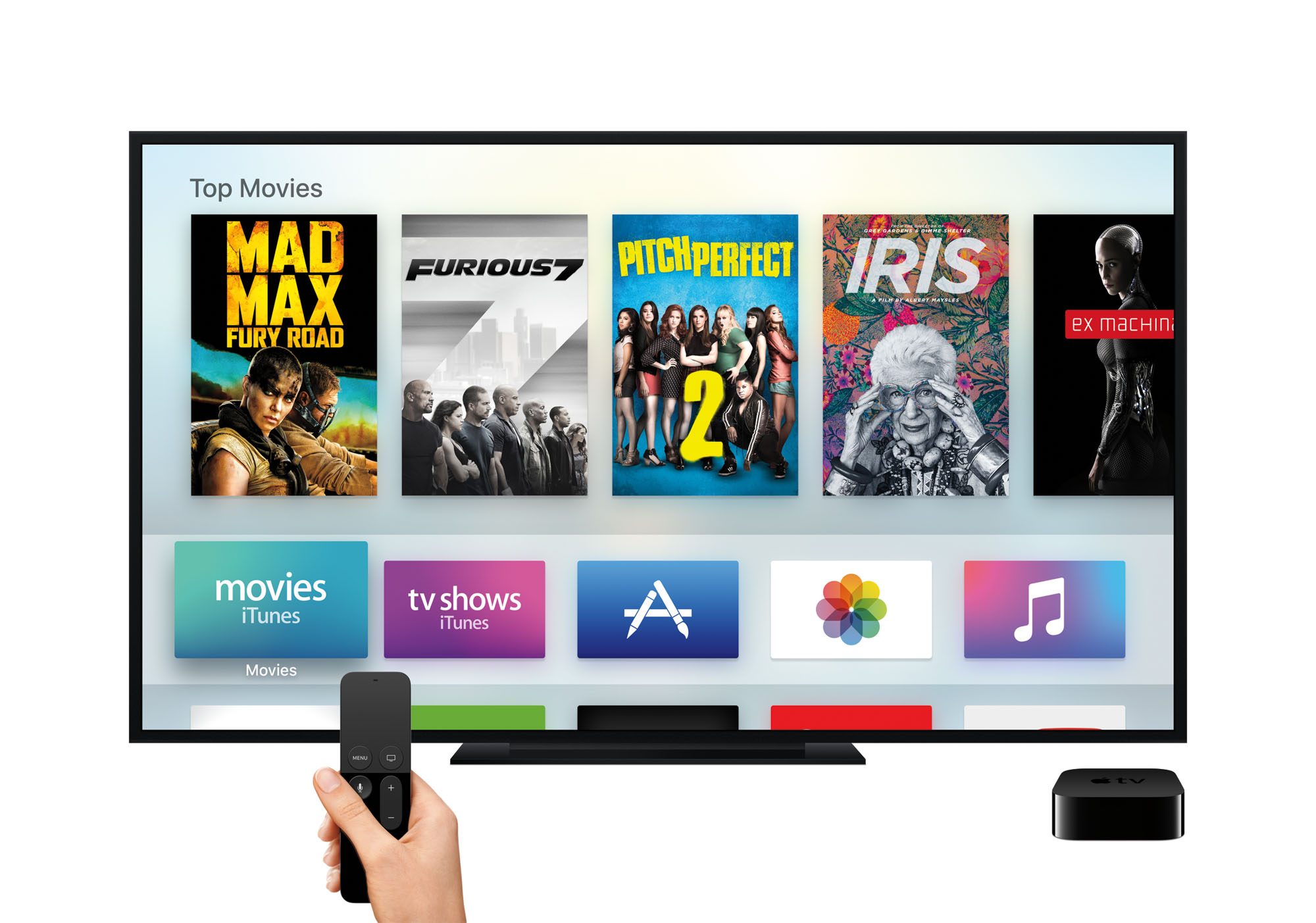
The new Apple TV features a redesigned interface and a new touch-sensitive remote.
Precisely games are one of the hallmark features of the new Apple TV. Like the iPhone, the iPod touch and the iPad before it, the Apple TV can now run apps and even has its own App Store. In fact, Apple even created a new tvOS specifically for it,1 with a 3rd-party SDK and everything.
Gaming performance looked impressive during the few onstage demos we saw, and the ability to use the remote as a controller (as well as any iPhone or iPod touch) is definitely a great feature. At their core, though, games on the Apple TV may be revolutionary, but the most interesting thing about them is what they represent: 3rd-party apps running on yet another Apple device, and one that aims to conquer your entire living room, at that.
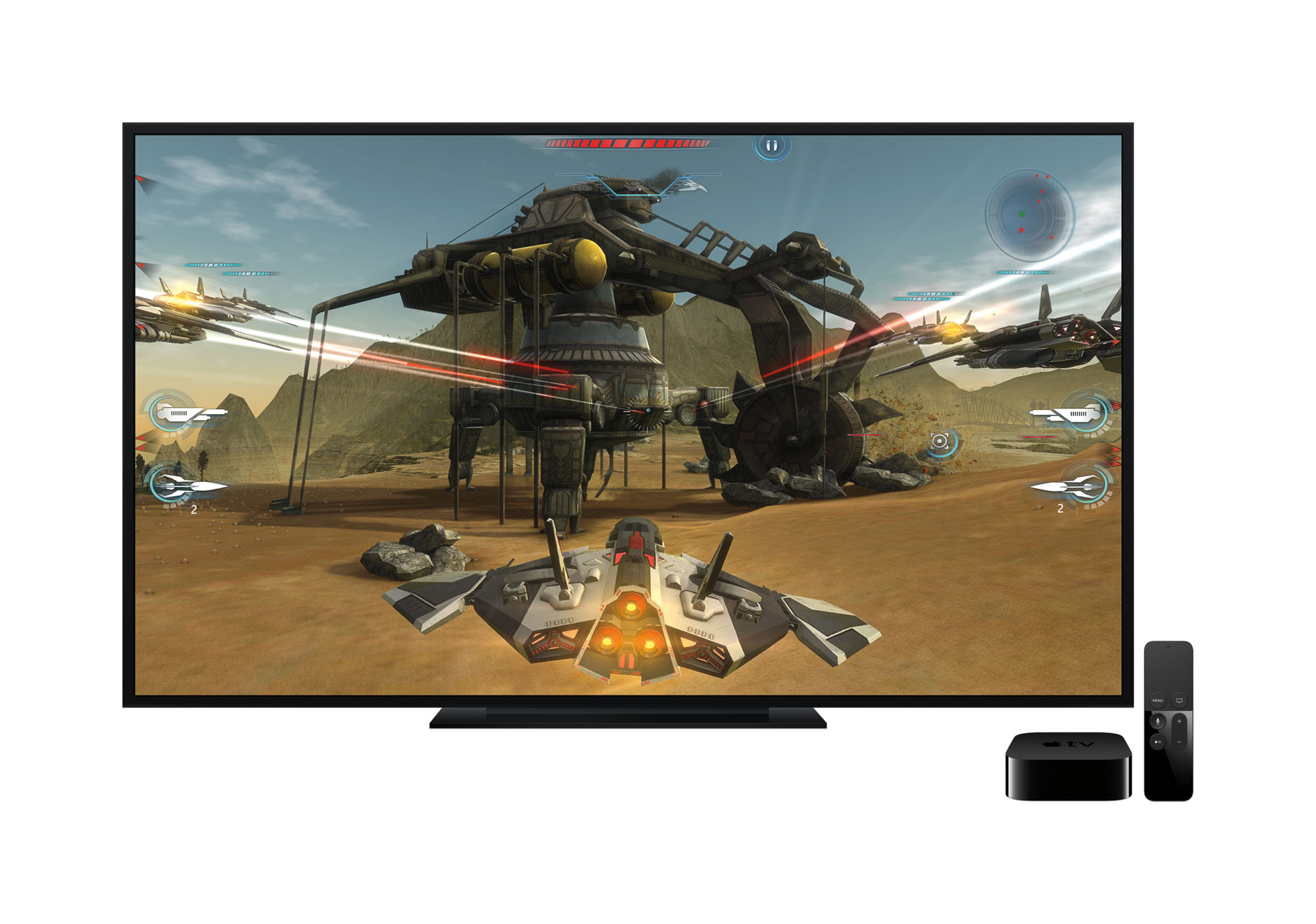
Gaming is a big part of the new Apple TV, and performance seems impressive.
Another addition to the new Apple TV is Siri integration. It’s now possible to ask Siri for all kinds of specific content, and the relevant info appears overlaid on screen in a non-intrusive but really helpful way. The few demos that were shown during the keynote were great, with Siri even being able to locate particular cameo appearances of famous actors in popular TV shows.
Beyond that, Siri also works much like it does on other iOS devices, being able to display weather forecasts, sports scores and many other pieces of information. This integration has the potential to really change the way we interact with television in our homes, but it’s still early to say if it will stick. Voice-driven interfaces are always tricky to integrate at scale, but if anyone can do it, it’s surely Apple.
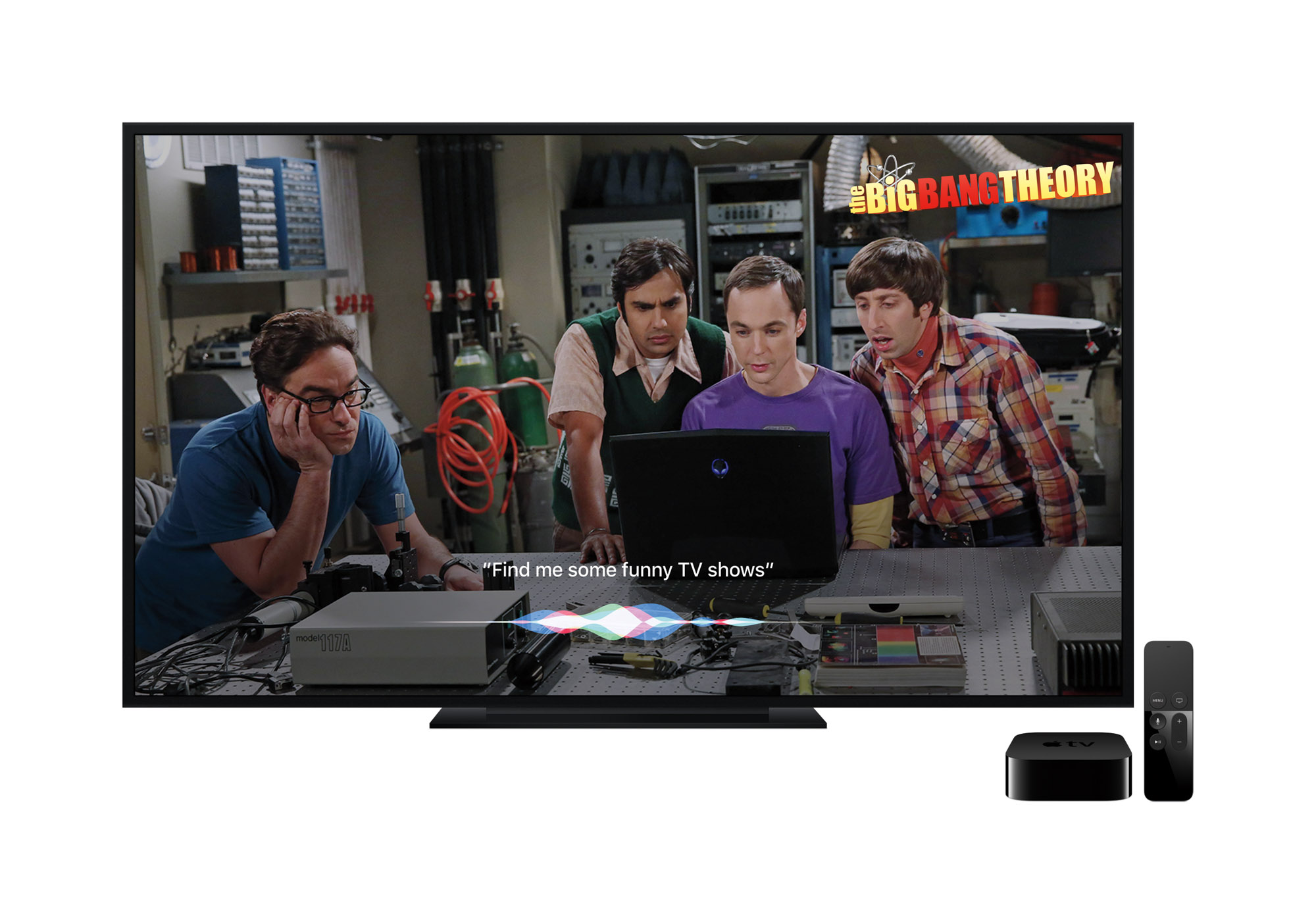
Siri is now a fundamental part of Apple TV.
As cool as Siri integration is, Apple seems to believe strongly that the future of television is apps, and they may well be right. But this focus on apps may have come at the expense of the more traditional TV aspect of the Apple TV.
I was actually disappointed at first when Apple didn’t announce any new content deals for the Apple TV. I was expecting a master stroke that finally convinced all major content providers to release their content on Apple’s platform.
Such an announcement had been teased by pretty much everyone in the media and often cited as the very reason why Apple seemingly kept delaying the announcement of a new Apple TV year after year. Surely that was what Jobs was referring to when he told Isaacson his now famous quote, right?
We may never know, but the fact that no new deals were announced may point to a different idea, which is what I’m betting we’ll see in the coming months: it’s not about deals, it’s about apps.

Apple is betting big on apps as the future of Apple TV.
Perhaps the reason why Apple didn’t announce any new content deals for the Apple TV is that they’re not interested in signing one to begin with. Perhaps their play all along was to convince content providers to write their own apps for the new Apple TV. That way Apple stops acting as a middle-man and stops spending resources in negotiating fleeting deals, and can concentrate instead on what they do best: building and maintaining a successful, profitable and insanely popular platform for 3rd-parties to release their content through their own apps.
Apple would not only eliminate much overhead in the legal department that way, but they would also leverage their expertise in platform building to offer something that virtually no other competitor could. Meanwhile, content providers would get to control exactly what, when and how they release their content, as well as the in-app viewing experience, creating new ways for networks to differentiate and compete against each other.
Think about it for a moment. If Apple TV starts selling in the millions of units per quarter, as surely Apple expects it to, what network wouldn’t want to have their own app for it? Talk about a win-win. This would definitely qualify as a master stroke in my book.
On top of all, Apple of course would be more than happy to collect their customary 30% fee for any subscriptions that are originated from within Apple TV apps, keeping their bottom line comfortably above water and the Apple TV nicely profitable.
The TV aspect of the Apple TV may have gotten nearly zero attention during the keynote, but if chips fall into place the way I think they will, it may end up being the biggest thing Apple unveiled yesterday.
The new iPhones
Ironically, Apple’s most profitable product ever was relegated to the last spot of yesterday’s keynote.
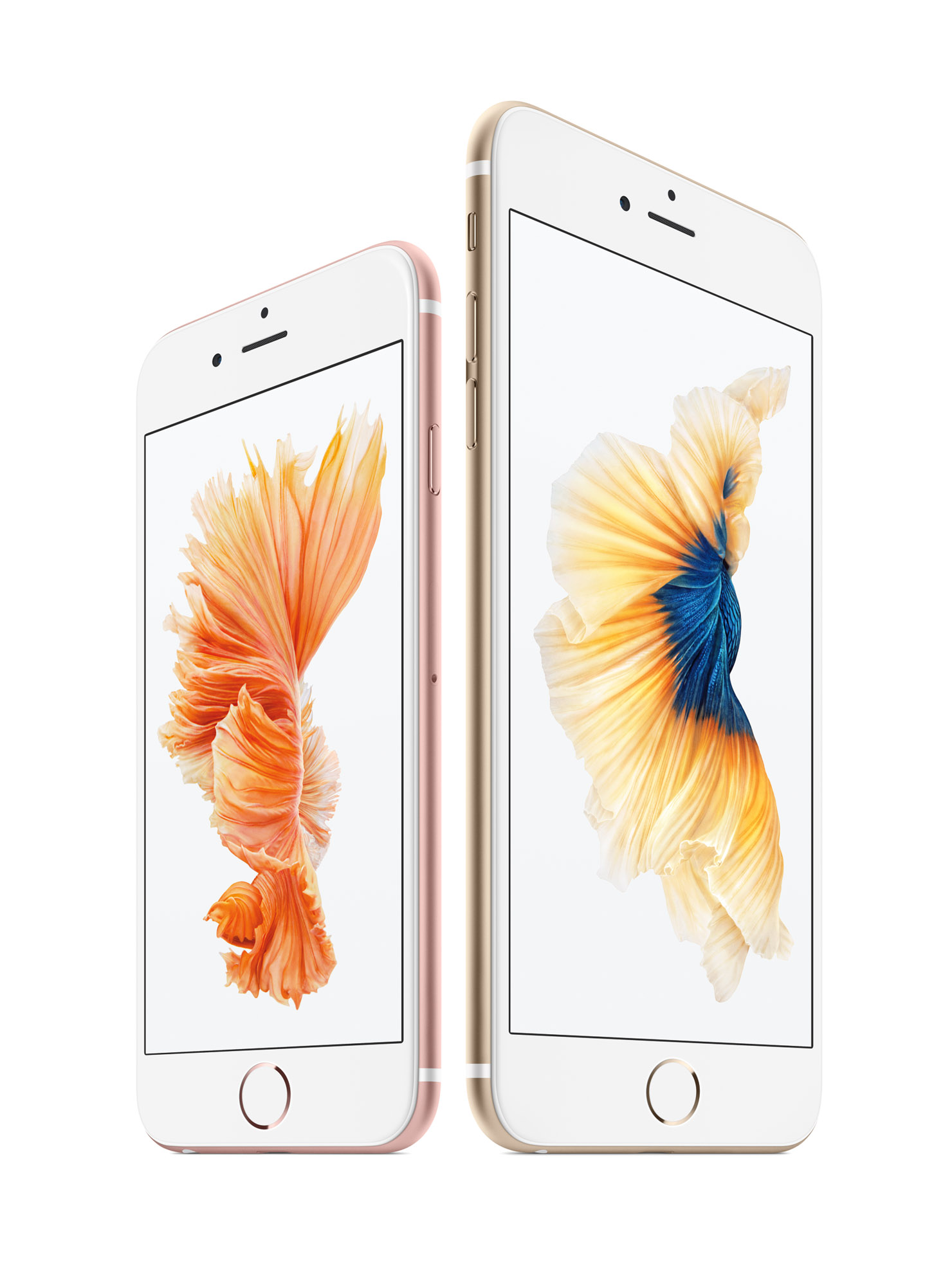
The new iPhone 6S and 6S Plus.
The announcement of a new S-model iPhone (like the iPhone 3GS, iPhone 4S and iPhone 5S) usually generates far less buzz than when a new number-model iPhone is announced. This is no doubt because the external design has virtually no changes on these models, and people often don’t think of a new iPhone as really new until it actually looks new.
This year, Apple seems to be playing right into that perception, with a clever marketing campaign for the new iPhone 6S and 6S Plus: “the only thing that’s changed is everything”.
In any case, and just in case the marketing is too subtle for some, they also introduced a new rose gold-colored model that looks quite nice and elegant to my eyes.
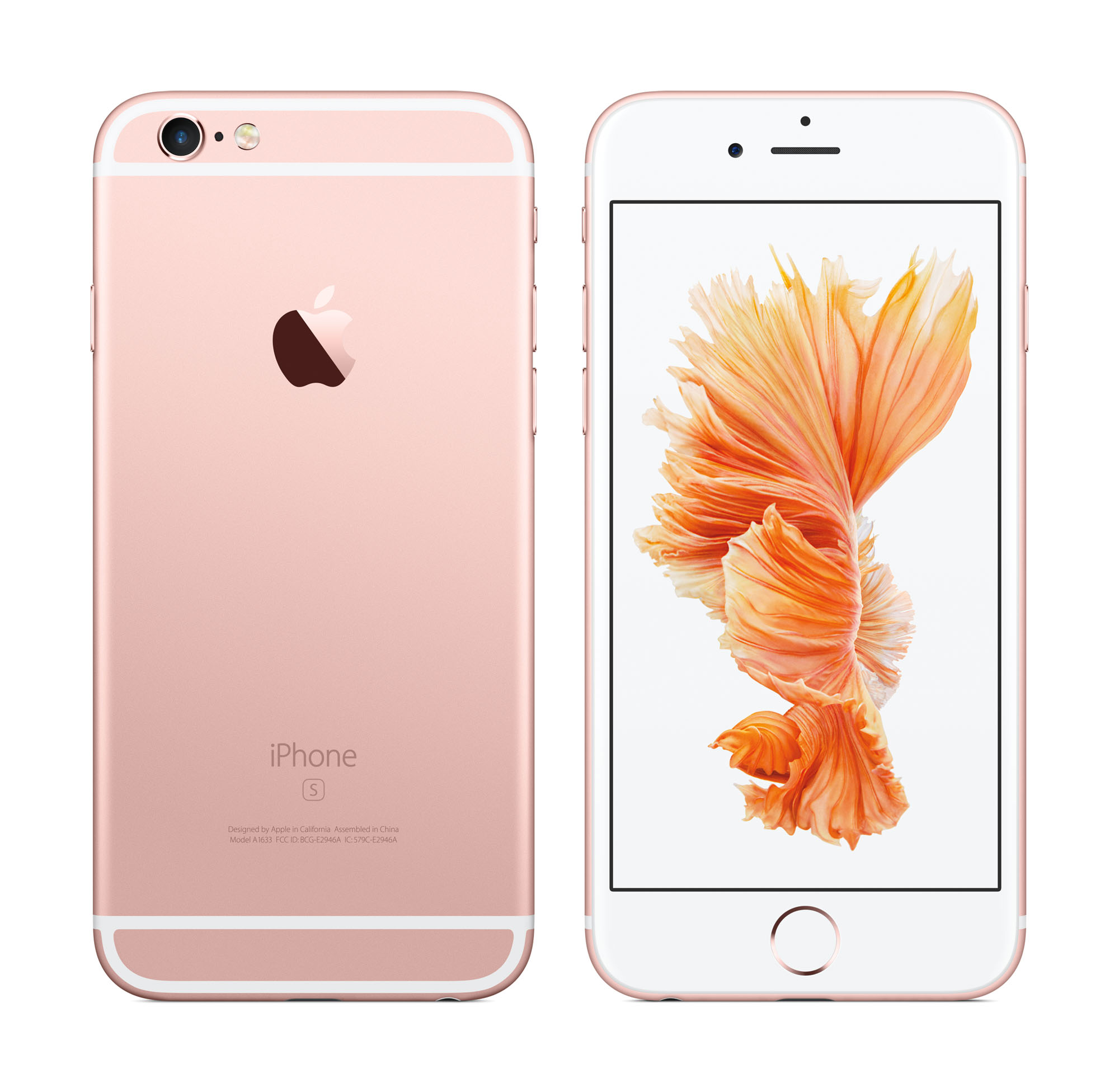
For the first time, Apple also announced a rose gold-colored iPhone.
Indeed, the new iPhones are chock-full of new technologies, the most notable of which is probably 3D Touch, the iPhone version of Force Touch that was demoed on stage by Craig Federighi.
Speaking of Federighi, this time around he seemed different, more rushed and less polished than usual. It may be just me, but he seemed slightly off his game, although I can’t quite put my finger on why.
But back to 3D Touch. It’s a nice new way of interacting with your iPhone, but it seems mostly limited to OS-level interactions. That means developers will only be able to integrate 3D Touch in their apps in limited ways for now. Those ways are explained in the Apple Developer page for 3D Touch.
On one hand this sucks, but on the other it keeps 3D Touch as a well-defined and simple to understand interaction model. 3D Touch appears to be great for bringing up contextual menus, something along the lines of a right-click on OS X, for example. It’s also a cool way of going into a deeper level on those areas that support it, like viewing photos, email messages and so on.
Other than that, the new iPhones of course have the usual set of under-the-hood refinements: a more powerful A9 chip (the same as in the new iPad Pro), a better vibration unit, a better display with more resistant glass and a better aluminum construction are all to be found here. But perhaps the most important upgrade of all is the camera.
The iPhone 6S and 6S Plus feature greatly improved cameras over their predecessor. The new iSight cameras (the ones in the back) now have 12-Megapixel sensors and improved image processing, with better dynamic range and noise performance in low-light situations. However, the iSight camera in the iPhone 6S continues to lack optical image stabilization, a feature that debuted last year on the iPhone 6 Plus and that remains Plus-only this year.
The front-facing FaceTime cameras have also been improved and are now 5-Megapixel cameras in both iPhones. And by using a new chip and some clever engineering, Apple can now use the Retina display of the new iPhones as an improvised flash to use when taking selfies. This is a nice addition that will surely be widely used by many, many people. We are, after all, living in the selfie era.
The new iPhones have certainly no shortage of innovation but to be honest, I don’t think there’s enough here for current iPhone 6 and 6 Plus owners to absolutely need to upgrade. Owners of previous generation iPhones like myself will have a much easier time deciding, though: if money allows for it, the new iPhone 6S and 6S Plus are clearly the best iPhones to date.
Normally, that would be my assessment, but there was something else Apple announced yesterday that may be just the little push many people need to be convinced into upgrading.
The iPhone Upgrade Program
Apple announced a new upgrade program for iPhone, aimed squarely at customers that want to upgrade their iPhone every year. It’s a new way to purchase an iPhone, besides signing a 24-month contract with a carrier or buying an unlocked phone outright, which until now had been my preferred method. I just don’t like being tied to a carrier if I can help it.
With the new iPhone Upgrade Program, you can replace your relationship with the carrier by a relationship with Apple instead. The way it works is very similar to the way carrier financing has always worked: you pay a monthly fee with a 24-month contract, but you get to upgrade your iPhone after the first 12 months. On top of that, you also get AppleCare+ for your iPhones, which covers up to two instances of accidental damage, like a broken screen, for example. This is a very welcome addition and it could very well prove life-saving. If you’ve ever dropped your iPhone onto concrete or know somebody who has, you know what I’m talking about.
That all sounds great, but is it really a good value? Let’s see an example.
If you crunch the numbers, you’ll see that entering into the iPhone Upgrade Program will cost you about $450 per year for a 64 GB iPhone 6S. If you compare that with the full retail price of $749 for than same model (and that’s without AppleCare+), you’ll see that it’s well worth it.
Indeed, the full cost of the iPhone Upgrade Program over the 24-month contract is about $900, which is certainly more than the retail price of that same iPhone. However, if you add in the AppleCare+ program (another $129), you pretty much break even once the full 24 months have expired.
What this means is that, if you’re eligible, the new iPhone Upgrade Program is essentially a no-brainer. You pay only what it would cost you to upgrade every two years, but you get to upgrade every year instead. This was a really interesting move by Apple, and I’m sure many customers will benefit from it.
As a final comment, we’ll have to wait and see how the new program affects iPhone sales through the usual carrier-sponsored channels. Given Apple’s limited retail presence compared to phone carriers, this program may not hurt the carriers’ bottom line significantly, but I can’t imagine them being all too happy about it.
Final words (I promise)
That should cover just about everything that was announced yesterday, so if you read through the whole piece, you should be all set. I wasn’t expecting to go over things in this much detail, but I guess there was more to the event than I originally thought. It’s funny how that happens.
In any case, there should be plenty of Apple-related news in the coming days, as more details about the new products become available. It’s going to be an interesting lead up to the holiday season, so stay tuned for more and, as ever, thank you for reading.
-
This new tvOS no doubt started out as a forked branch of iOS, but still.↩
Caught in no-man’s land: the Zeiss Loxia 35mm f/2 lens
I was very surprised a while back when Jordan Steele reviewed the Loxia 35mm f/2 lens over at Admiring Light. Jordan’s take was pretty underwhelming for a lens that, at $1,300, is priced as a decidedly-premium offering. He even went so far as to call the 35mm’s bokeh “frankly terrible”, which just seemed crazy. I hold Jordan’s opinion in extremely high esteem so naturally, my interest in the Loxia line kind of vanished after reading that review.
However, for fairness’ sake, I looked for other reviews trying to see if Jordan’s was a fluke or part of an overall trend. Bad copies of lenses have been known to get into many a reviewer’s hands from time to time, so it was always possible that Jordan had a defective copy, after all.
For those looking for a second opinion, I recently came across SonyAlphaLab’s amazing review of the lens. Jay’s review is just as well researched and it definitely has a more positive tone to it than Jordan’s. Check out his video review below for more information:
I haven’t personally used the lens, so I can’t speak from first-hand experience, but judging from Jay’s excellent pictures, it’s hard to call the image quality out of the Loxia anything other than great.1 That being said, I frankly don’t see the point of spending $1,300 on a manual focus lens, especially when you could spend about $150 on something like a Canon FD 35mm f/2 plus an adapter on eBay and call it a day.
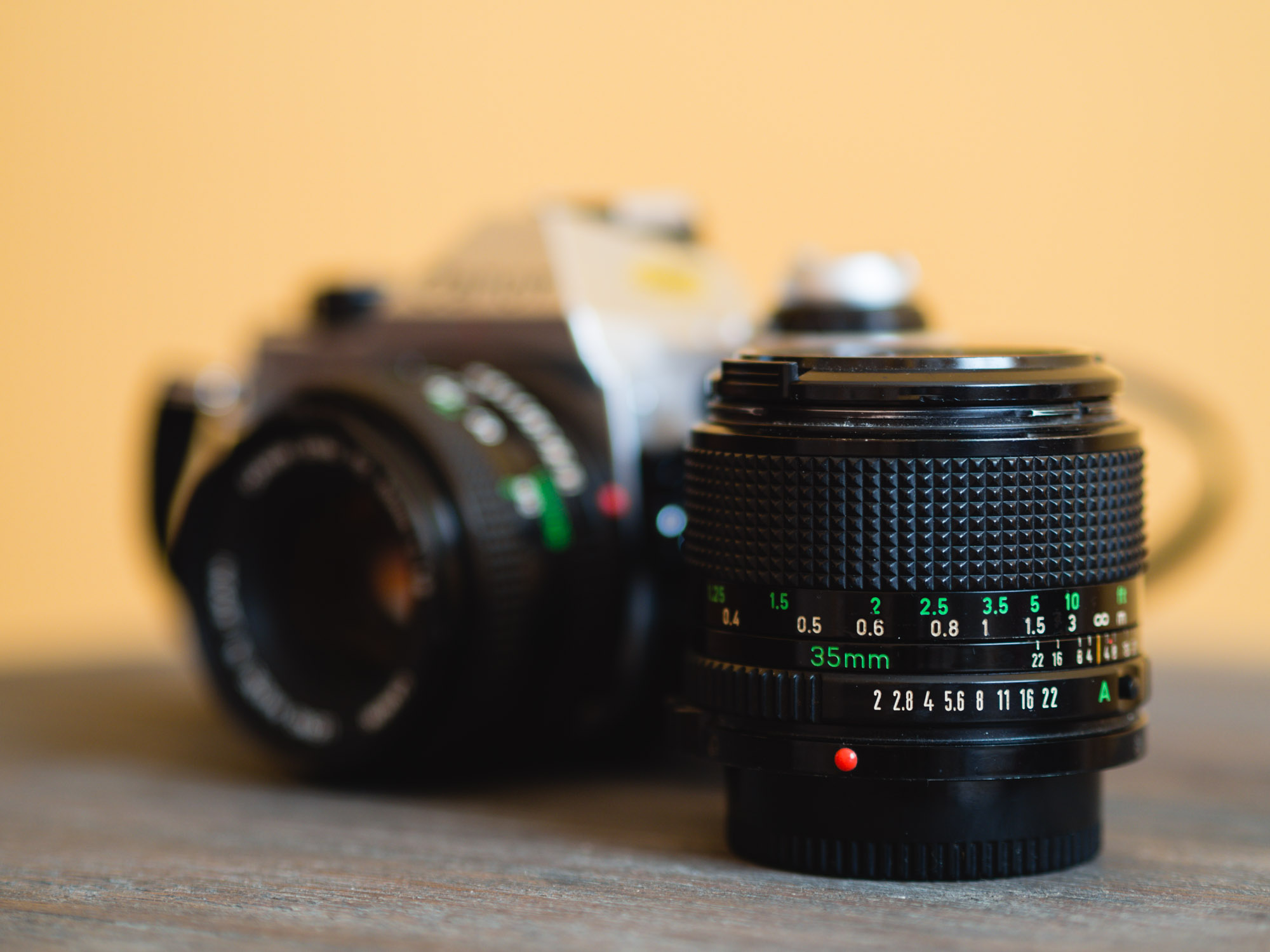
Something like this Canon FDn 35mm f/2 lens plus an inexpensive adapter would be a great — and much cheaper — alternative to the Loxia.
Also, as far as native FE-mount alternatives go, don’t forget Zeiss’ own FE 35mm f/2.8 Sonnar lens, which is a stop slower but comes in at half the price of the Loxia, or even the impressive FE 35mm f/1.4 Distagon, which is faster and much better optically and only costs a couple hundred dollars more.
Indeed, there are plenty of alternatives to the Loxia 35mm lens for Sony A7-series owners. Some of them are optically better, some of them aren’t. Similarly, some of them are more expensive, and some are much cheaper. However, nearly all of those seem to have been designed and optimized with a very specific purpose in mind, be it image quality, price or a sensible combination of the two.
As such, if you want the fastest lens or the best possible image quality, you’ll be better off with the f/1.4 Distagon. If you just want a good manual 35mm f/2 lens, nothing will ever beat an adapted lens like the Canon in price, and I’m willing to bet the image quality won’t be that different. If what you want is a good compromise between image quality and price, it’s hard to overlook the f/2.8 Sonnar. And if you just want something extravagant, well, there’s always Leica.
The bottom point is the Loxia, as good as it is, seems to be caught squarely in no-man’s land, unable to provide an obvious answer to the all-important question: “why should I buy this lens instead of one of the others?”.2
Every now and then, a lens just sings to you. This has been known to happen to the best of us. If that’s the case for you with the 35mm Loxia, by all means, go for it. It is, after all, a pretty damn fine lens. But if we’re trying to be rational about our purchases,3 there appears to be no compelling reason to justify its high cost, and that is what ultimately kills it for me.
-
Still, based on Jay’s review, I wouldn’t go as far as to say that Jordan definitely had a defective copy of the lens. The images in both reviews are close enough in terms of image quality that their different takes may have simply been a matter of personal preference. ↩
-
It’s important to note that this problem also affects the other Loxia lens, the 50mm f/2, which comes in at a hair under $1,000.↩
-
Crazy, I know. Never mind.↩
